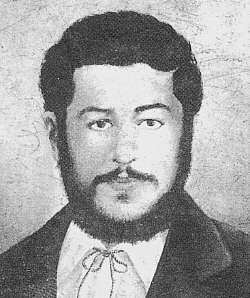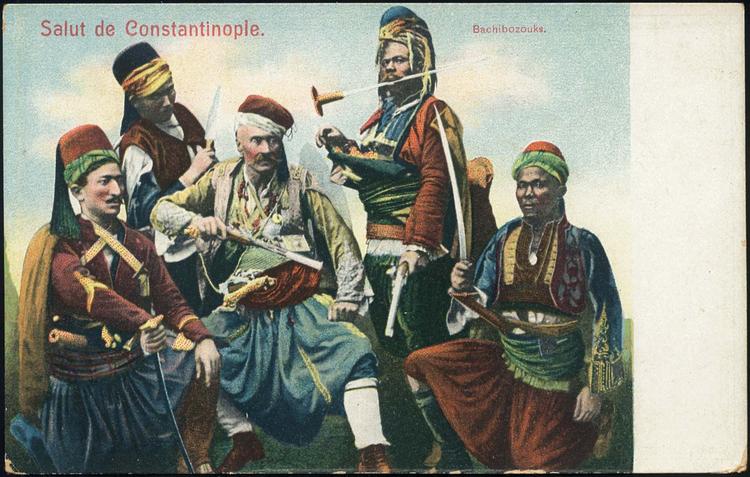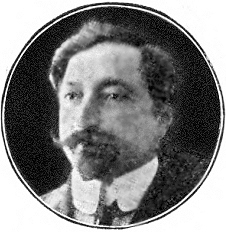|
1896 Ottoman Bank Takeover
The occupation of the Ottoman Bank ( tr, Osmanlı Bankası Baskını, "Raid on the Ottoman Bank"; hy, Պանք Օթօմանի գրաւումը, ''Bank Otomani k'ravumĕ'' "Ottoman Bank takeover") by members of the Armenian Revolutionary Federation (Dashnak Party) took place in Istanbul, the capital of the Ottoman Empire, on 26 August 1896. In an effort to raise further awareness and action by the major European powers, 28 armed men and women led primarily by Papken Siuni and Armen Garo took over the bank which largely employed European personnel from Great Britain and France. Stirred largely due to the inaction of the European powers in regard to Hamidian massacres started by Sultan Abdul Hamid II. The Armenian Revolutionary Federation members saw its seizure as their best attempt to bring full attention to their plight. The Ottoman Bank, at the time, served as an important financial center for both the Empire and the countries of Europe. Armed with pistols, grenades, dynamit ... [...More Info...] [...Related Items...] OR: [Wikipedia] [Google] [Baidu] |
Ottoman Bank
The Ottoman Bank ( tr, Osmanlı Bankası), known from 1863 to 1925 as the Imperial Ottoman Bank (french: Banque Impériale Ottomane, ota, بانق عثمانی شاهانه) and correspondingly referred to by its French acronym BIO, was a bank that played a major role in the financial history of the Ottoman Empire. By the early 20th century, it was the dominant bank in the Ottoman Empire, and one of the largest in the world. It was founded in 1856 as a British institution chartered in London, and reorganized in 1863 as a French-British venture with head office in Constantinople, on a principle of strict equality between British and French stakeholders. It soon became dominated by French interests, however, primarily because of the greater success of its offerings among French savers than British ones. In its early years, the BIO was principally a lender to the Ottoman government with a monopoly on banknote issuance and other public-interest roles, including all treasury operati ... [...More Info...] [...Related Items...] OR: [Wikipedia] [Google] [Baidu] |
Metropolitan Books
Henry Holt and Company is an American book-publishing company based in New York City. One of the oldest publishers in the United States, it was founded in 1866 by Henry Holt and Frederick Leypoldt. Currently, the company publishes in the fields of American and international fiction, biography, history and politics, science, psychology, and health, as well as books for children's literature. In the US, it operates under Macmillan Publishers. History The company publishes under several imprints, including Metropolitan Books, Times Books, Owl Books, and Picador. It also publishes under the name of Holt Paperbacks. The company has published works by renowned authors Erich Fromm, Paul Auster, Hilary Mantel, Robert Frost, Hermann Hesse, Norman Mailer, Herta Müller, Thomas Pynchon, Robert Louis Stevenson, Ivan Turgenev, and Noam Chomsky. From 1951 to 1985, Holt published the magazine ''Field & Stream''. Holt merged with Rinehart & Company of New York and the John C. Winston Com ... [...More Info...] [...Related Items...] OR: [Wikipedia] [Google] [Baidu] |
Bashi-bazouk
A bashi-bazouk ( ota, باشی بوزوق , , , roughly "leaderless" or "disorderly") was an irregular soldier of the Ottoman army, raised in times of war. The army chiefly recruited Albanians and Circassians as bashi-bazouks, but recruits came from all ethnic groups of the Ottoman Empire including slaves from Europe or Africa. They had a reputation for bravery, but also as an undisciplined and brutal group, notorious for looting and preying on civilians as a result of a lack of regulation and of the expectation that they would support themselves off the land. Origin and history Although the Ottoman armies always contained mercenaries as well as regular soldiers, the strain on the Ottoman feudal system caused mainly by the Empire's wide expanse required heavier reliance on irregular soldiers. They were armed and maintained by the government, but did not receive pay and did not wear uniforms or distinctive badges. They were motivated to fight mostly by expectations of plu ... [...More Info...] [...Related Items...] OR: [Wikipedia] [Google] [Baidu] |
Tünel
The Tünel ( en, Tunnel, designated as the F2 line on the Istanbul transport map) is a historic underground funicular line in Istanbul, Turkey. It has two stations, connecting Karaköy and Beyoğlu. The tunnel runs uphill from near the confluence of the Golden Horn with the Bosphorus and is about long. Inaugurated on 17 January, 1875, the Tünel is the second-oldest fully underground urban railway in the world, after the London Underground (1863) and oldest in continental Europe, pre-dating the Budapest Metro by 21 years. History In the second half of the 19th century the neighborhoods of Pera (modern day Beyoğlu) and Galata (modern day Karaköy) had become the financial and commercial heart of Constantinople (modern day Istanbul) and the Ottoman Empire. Many Ottoman and foreign companies, mostly banks and insurance companies, set up their headquarters in these two neighborhoods. Foreign embassies, hotels and commercial markets in Pera were located at the top of a steep h ... [...More Info...] [...Related Items...] OR: [Wikipedia] [Google] [Baidu] |
Taksim Square
Taksim Square ( tr, Taksim Meydanı, ), situated in Beyoğlu in the European part of Istanbul, Turkey, is a major tourist and leisure district famed for its restaurants, shops, and hotels. It is considered the heart of modern Istanbul, with the central station of the Istanbul Metro network. Taksim Square is also the location of the Republic Monument ( tr, Cumhuriyet Anıtı) which was crafted by Pietro Canonica and inaugurated in 1928. The monument commemorates the 5th anniversary of the foundation of the Republic of Turkey in 1923, following the Turkish War of Independence. The square is flanked to the south by The Marmara Hotel, to the east by the Atatürk Cultural Centre, to the north by Gezi Park and to the west by Taksim Mosque. Several major roads converge on the square: Gümüşsuyu Caddesi, Cumhuriyet Caddesi, Tarlabaşı Bulvarı, İstiklal Caddesi and Sıraselviler Caddesi. History The word Taksim means "division" or "distribution" in Arabic. Taksim Square was o ... [...More Info...] [...Related Items...] OR: [Wikipedia] [Google] [Baidu] |
Pera (Beyoğlu)
Pera may refer to: Places * Pera (Beyoğlu), a district in Istanbul formerly called Pera, now called Beyoğlu ** Galata, a neighbourhood of Beyoğlu, often referred to as Pera in the past * Pêra (Caparica), a Portuguese locality in the district of Setúbal * Pera (San Giovanni di Fassa), an Italian hamlet in the municipality of San Giovanni di Fassa, in Trentino * Pêra (Silves), a Portuguese parish in the district of Faro in the Algarve * Pera Orinis, a village in Cyprus Other uses * Pera (surname) * The ''Pera'', a ship of the Dutch East India Company * Peda or Pera, a dessert in Pakistan and India * ''Pera'' (plant), a plant genus in the family Peraceae * Public Employees Retirement Association, the name of several public employee pension plans in the United States * Peripheral ERA, a baseball statistic * Purdue Enterprise Reference Architecture * ''perA Pera may refer to: Places * Pera (Beyoğlu), a district in Istanbul formerly called Pera, now called Beyoğlu ** Galata, a ... [...More Info...] [...Related Items...] OR: [Wikipedia] [Google] [Baidu] |
Galata
Galata is the former name of the Karaköy neighbourhood in Istanbul, which is located at the northern shore of the Golden Horn. The district is connected to the historic Fatih district by several bridges that cross the Golden Horn, most notably the Galata Bridge. The medieval citadel of Galata was a colony of the Republic of Genoa between 1273 and 1453. The famous Galata Tower was built by the Genoese in 1348 at the northernmost and highest point of the citadel. Galata is now a quarter within the district of Beyoğlu in Istanbul. Etymology There are several theories concerning the origin of the name ''Galata''. The Greeks believe that the name comes either from ''Galatai'' (meaning "Gauls"), as the Celtic tribe of Gauls ( Galatians) were thought to have camped here during the Hellenistic period before settling into Galatia in central Anatolia; or from ''galatas'' (meaning " milkman"), as the area was used by shepherds for grazing in the Early Medieval (Byzantine) peri ... [...More Info...] [...Related Items...] OR: [Wikipedia] [Google] [Baidu] |
Topkapı Palace
The Topkapı Palace ( tr, Topkapı Sarayı; ota, طوپقپو سرايى, ṭopḳapu sarāyı, lit=cannon gate palace), or the Seraglio, is a large museum in the east of the Fatih district of Istanbul in Turkey. From the 1460s to the completion of Dolmabahçe Palace in 1856, it served as the administrative center of the Ottoman Empire, and was the main residence of its sultans until the 17th century. Construction, ordered by the Sultan Mehmed the Conqueror, began in 1459, six years after the conquest of Constantinople. Topkapı was originally called the "New Palace" (''Yeni Saray'' or ''Saray-ı Cedîd-i Âmire'') to distinguish it from the Old Palace (''Eski Saray'' or ''Sarây-ı Atîk-i Âmire'') in Beyazıt Square. It was given the name ''Topkapı'', meaning Cannon Gate, in the 19th century. The complex expanded over the centuries, with major renovations after the 1509 earthquake and the 1665 fire. The palace complex consists of four main courtyards and many smaller b ... [...More Info...] [...Related Items...] OR: [Wikipedia] [Google] [Baidu] |
Golden Horn
The Golden Horn ( tr, Altın Boynuz or ''Haliç''; grc, Χρυσόκερας, ''Chrysókeras''; la, Sinus Ceratinus) is a major urban waterway and the primary inlet of the Bosphorus in Istanbul, Turkey. As a natural estuary that connects with the Bosphorus Strait at the point where the strait meets the Sea of Marmara, the waters of the Golden Horn help define the northern boundary of the peninsula constituting "Old Istanbul" (ancient Byzantium and Constantinople), the tip of which is the promontory of Sarayburnu, or Seraglio Point. This estuarial inlet geographically separates the historic center of Istanbul from the rest of the city, and forms a horn-shaped, sheltered harbor that in the course of history has protected Greek, Roman, Byzantine, Ottoman and other maritime trade ships for thousandsBBC: "Istanbul ... [...More Info...] [...Related Items...] OR: [Wikipedia] [Google] [Baidu] |
Galata Bridge
The Galata Bridge ( tr, Galata Köprüsü, ) is a bridge that spans the Golden Horn in Istanbul, Turkey. From the end of the 19th century in particular, the bridge has featured in Turkish literature, theater, poetry and novels. The current Galata Bridge is just the latest in a series of bridges linking Eminönü in the Fatih district and Karaköy in Beyoğlu since the early 19th century. The current bridge, the fifth on the same site, was built in 1994. The bridge was named after Galata (the former name for Karaköy) on the northern shore of the Golden Horn. History of Bridging the Golden Horn The first recorded bridge over the Golden Horn was built during the reign of Justinian the Great in the 6th century, close to the area near the Theodosian Land Walls at the western end of the city. In 1453, before the Fall of Constantinople, the Turks assembled a mobile bridge by placing their ships side by side across the water, so that their troops could move from one side of th ... [...More Info...] [...Related Items...] OR: [Wikipedia] [Google] [Baidu] |
Haig Tiriakian
Haig (Hrach) Tiriakian (1871–1915) was an Ottoman Armenian politician and a member of the Armenian National Assembly. Tiriakian played an important role during the Ottoman Bank takeover in 1896. A member of the Armenian Revolutionary Federation, Tiriakian lead an active life in Armenian politic affairs. He was killed during the Armenian genocide in 1915. Life Of Armenian descent, Haig (Hrach) Tiriakian was born in Trabzon, Ottoman Empire in 1871. In 1893, Tiriakian then went to Nancy, France where he studied agriculture until 1896. During his time in Europe, Tiriakian joined the Armenian Revolutionary Federation where his first assignment was assigned the planning of the Ottoman Bank takeover. The takeover was planned in order to raise further awareness and action by the major European powers. The bank was largely employed European personnel from Great Britain and France. Stirred by the inaction of the European powers in regards to Hamidian massacres, the Armenian Revolu ... [...More Info...] [...Related Items...] OR: [Wikipedia] [Google] [Baidu] |







.jpg)

